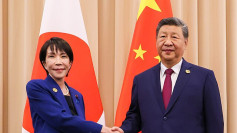In an effort to rival Apple and Samsung for market share in the high-end segment, Xiaomi unveiled its flagship smartphone on a global scale on Sunday.
The Xiaomi 13 Pro gadget features the most recent Snapdragon 8 Gen 2 chipset from US company Qualcomm and a 6.73-inch display. Together with other high-end features like ultra-fast charging, it sports a triple-lens camera.
The company bragged about the features of the camera it "co-engineered" with the German manufacturer Leica.
The Xiaomi 13 and 13 Pro were first introduced in China in December, but the Beijing-based company is now exporting the gadgets to foreign markets.
According to research firm IDC, Xiaomi had a difficult year in 2022, with its smartphone shipments decreasing 26% year over year, the worst decline among the top five largest handset suppliers. The most recent financial figures available show that the company experienced a loss in the third quarter of 2009.
A number of challenges have been faced by Xiaomi, most notably a more challenging macroeconomic climate brought on by a weakening Chinese economy. According to IDC, the total number of smartphones shipped in 2022 was 1.21 billion, which is the fewest since 2013.
"Xiaomi is facing multiple headwinds inside China from an ever-popular Apple iPhone, a surprisingly strong Honor, and fickle Chinese consumers who often switch between Android hardware brands in a flash," Neil Mawston, an analyst at TechInsights, in an email he said.
The Huawei subsidiary brand of Chinese smartphones is called Honor.
Through the years, Xiaomi has grown to be one of the largest manufacturers of smartphones thanks to a strategy that involves releasing high-end products at prices that are extremely low. It started attempting to penetrate international markets about seven years ago, using a similar approach. The higher end of the market, where margins are better and the market is still expanding, is where it is now aiming to make inroads, though.
According to research from Canalys, the market share of high-end smartphones, or those that cost more than $800, increased from 11% in 2020 to 18% in 2022. It will be difficult for Xiaomi to compete with Apple and Samsung when it moves up into the premium category. As per Canalys, Samsung and Apple products will make up 92% of the high-end market in 2022.
The most recent Chinese smartphone manufacturer making an attempt to break into the high-end market is Xiaomi. This month, Oppo unveiled its first foldable phone for the international market, which costs more than $1,000.






